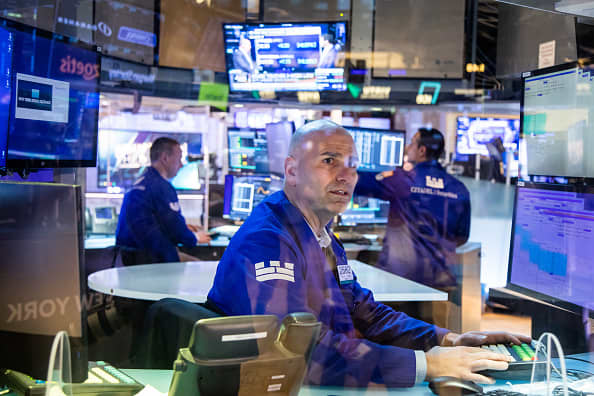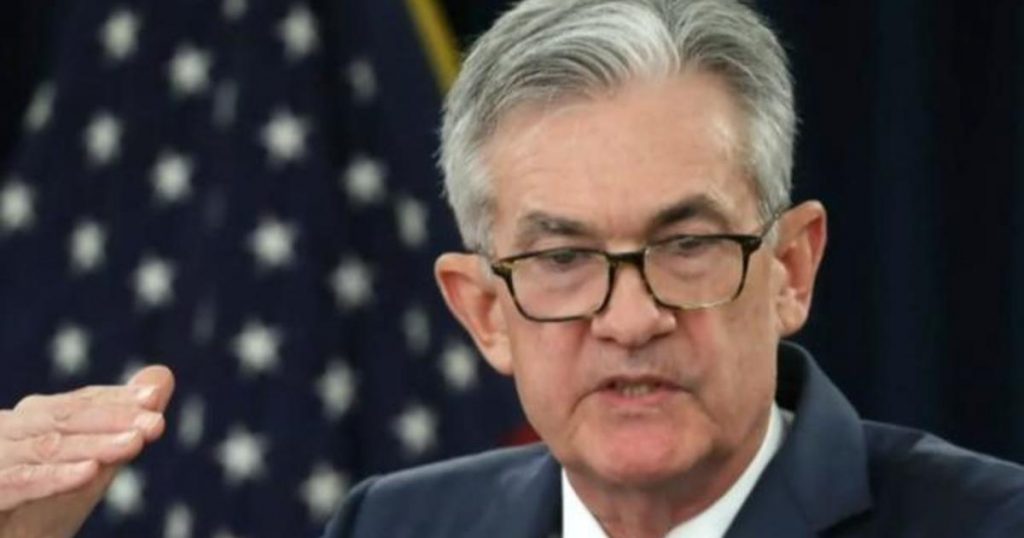
Stocks pared some of their gains after the Federal Reserve raised rates and said it would hike another six times this year, more aggressively than many investors had expected.
Federal Reserve announced at the conclusion of its two-day meeting Wednesday that it will increase short-term interest rates by a quarter of a percentage point, a well-telegraphed move by the central bank as it seeks to control surging inflation.
The Dow Jones Industrial Average fell about 129 points, or 0.4%. The S&P 500 lost 0.2% and the Nasdaq Composite gained 0.4%.
The move brings the rate into a range of 0.25%-0.5%. The committee forecasts a consensus funds rate of 1.9% by year’s end.
“This is a very aggressive move,” David Kelly, chief global strategist at JPMorgan Asset Management, told CNBC’s “Power Lunch.” “I just want the Fed to maintain some flexibility. In the long run, we have to get rates back to positive real levels. But there’s a lot of uncertainty out here, and remember we’ve got a lot of financial assets which are built on the edifice of super low rates, and you can’t just raise those rates up to normal levels overnight and expect nothing bad to happen.”
The 10-year Treasury yield jumped to 2.24%, its highest level since 2019 after the Fed’s statement. That sent bank shares higher on optimism their bottom lines would get a boost from the higher rates. JPMorgan shares added 3%, while Bank of America added 2.5%.
Tech shares, however, gave up earlier gains on fears the higher rates would make their future profits less valuable. Microsoft shares traded into the red.
Stocks rallied earlier in the day following a Financial Times report that Ukraine and Russia have made “significant progress” on a peace plan and Russian withdrawal.
Before the FT report, stocks were gaining on hopes that some sort of ceasefire was close. Ukrainian President Volodymyr Zelenskyy said a peace agreement was beginning to “sound more realistic” in an address to the nation Tuesday. Russian Foreign Minister Sergey Lavrov told the BBC there was “some hope of reaching a compromise.” Russian State media quoting the Kremlin echoed similar sentiments overnight.
“You’re starting to see some resolution of some of the overhang in terms of the broader economic issues,” said Stephanie Lang, chief investment officer at Homrich Berg. “The market is hoping for resolution in the Ukraine, but of course, it’s just talks at this point, and we actually need to see a ceasefire, we need to see that play out in more entirety before we close the loop on that so there’s still a lot of uncertainty.”
The war between Ukraine and Russia has sent ripples through global financial markets, pushing commodity prices sharply higher and stocks lower. However, some commodities have cooled off in recent days, while the U.S. equity market tries to find its footing.
U.S. oil traded lower on Wednesday following the FT report, after topping a multiyear high of $130 earlier this month.
Micron Technology was among the best-performing S&P 500 stocks, gaining more than 7%. Starbucks shares climbed 6% after an upgrade from JPMorgan, while Dow member Boeing advanced more than 3%.
Several Chinese stocks rocketed more than 20% higher after China signaled its support for overseas listings, after days of worries around delisting led them to tumble. Pinduoduo surged 45% and DiDi Global jumped 46%. The China Internet ETF is on pace for best day ever, up more than 29%, after its worst day ever on Monday.
Stocks are coming off a stellar session in which the Dow surged nearly 600 points, while the S&P 500 snapped a three-day losing streak.
In economic data, consumers continued to spend in February through at a slower pace than expected, according to a Commerce Department report Wednesday. Advance retail sales grew 0.3% for the month, slightly below the 0.4% Dow Jones estimate.

